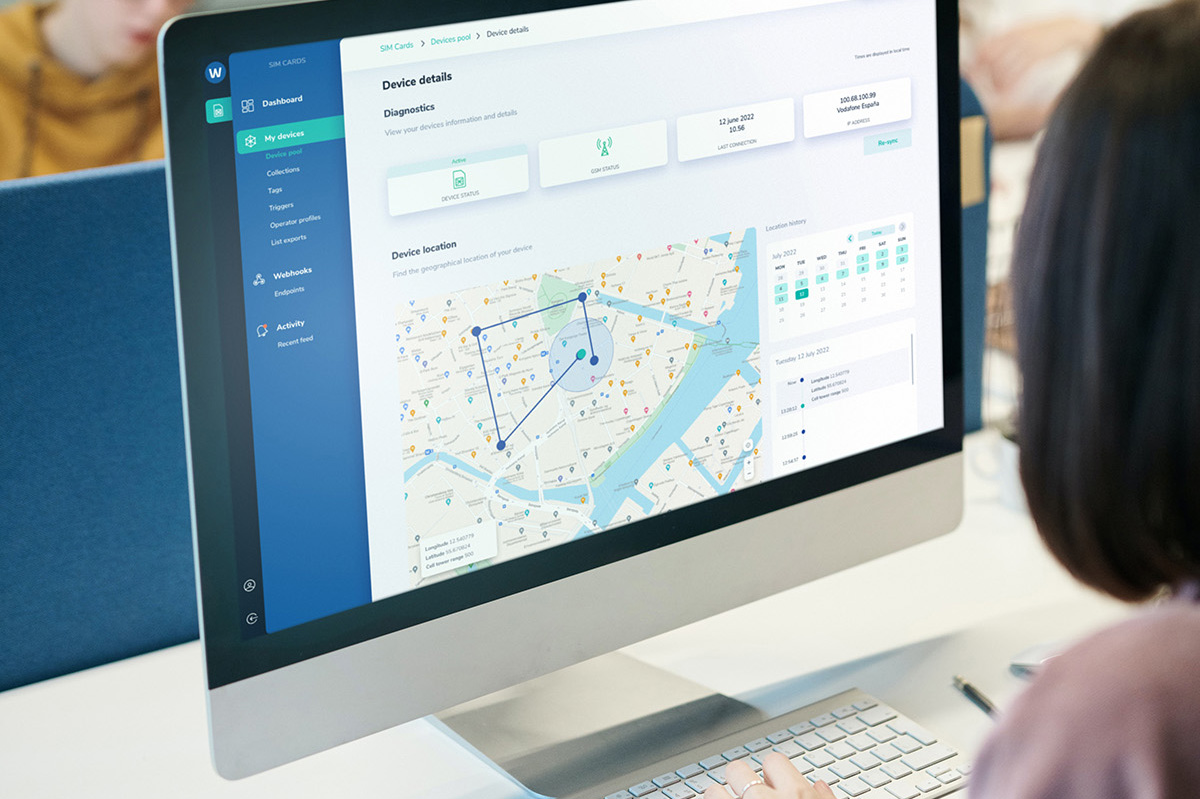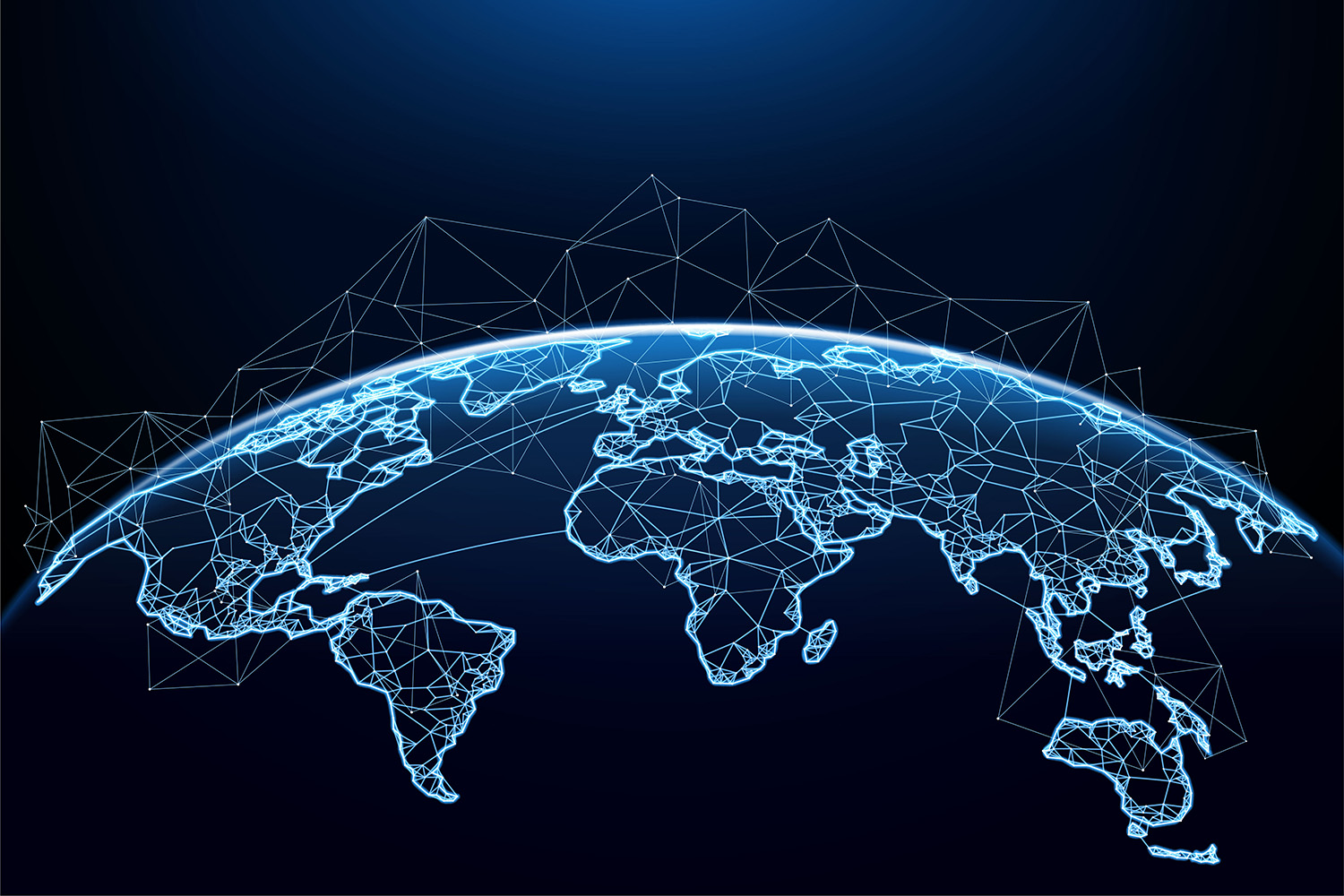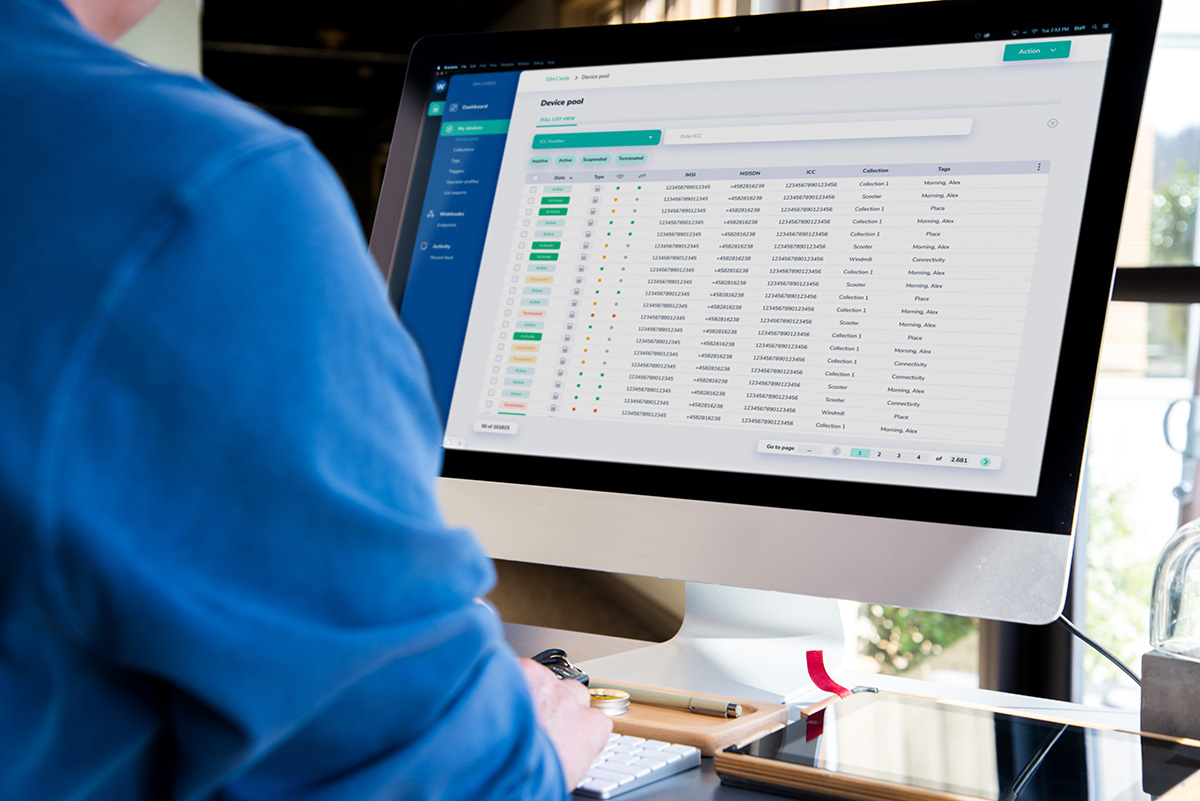Today a growing number of connected Internet of Things (IoT) devices are transforming how enterprises collect, analyze and utilize vast amounts of data.
The average individual may have one mobile phone, SIM, or device for personal use. However, for businesses with millions of IoT devices, maintaining connectivity and the flow of information is critical.
But, with this wealth of data, how can businesses maximize their potential and ensure they get the most out of it?
As a result, they require the proper setup, which will rely on several factors to ensure its accuracy and make it profitable.
Whether enterprises are commencing with IoT adoption across their operations or expanding their IoT networks, this article outlines a strategy enterprises can consider to stay in control of their IoT devices and utilize their data history to improve performance.
Determining a device’s location through GPS requires continual refreshing, thus, draining its battery.
However, that could be problematic for businesses that provide city bikes or transportation around an area. A drain of battery life because of its use of GPS could prevent the company from identifying the location of the bicycle or tracking its recent movements, thus resulting in its loss.
For businesses, therefore, network-based location tracking could be game-changing.
Network-based location tracking utilizes geographical location data to provide services based on the user’s location. For example, as the SIM card of the bicycle moves between different mast areas, the enterprise can track the dot of the individual’s journey. The dot cannot move or disappear, as it will only move between the mast area zones, thus, helping companies build a story surrounding the journey and data history to track the device’s location.
By obtaining this information through network-based location tracking rather than the devices, you can ensure no battery impact and data freedom without causing power drainage and ultimately helping to extend the device’s lifetime and reduce costs.
Enhancing connectivity is vital for the lost city bike’s safe return. With the ability to track its data history and see its movement across different mast areas, it can show the company its last signal or the route it has used and thus help identify its current location.
The infrastructural simplicity combined with the dawn of 5G promises enormous potential for IoT devices. It offers nearly real-time data transmission for mobile, data-intensive applications where speed is crucial. As well as ensuring a stable connection whilst devices are moving at high speed.
For example, a life sciences company is transporting medical goods whose temperature must be controlled. However, the goods were not functioning upon arrival because the temperature was too warm.
Businesses today require a clear overview of their connectivity usage history to ensure they can act to optimize, secure and scale their setup. Collecting the data gathered across their devices lets them see what works or how they can improve its design.
In the example above, the life sciences company can look at the devices’ data history to determine when and where the sensors told them it was too warm.
Therefore, it allows the company to analyze the data history to understand better where the problem or event occurred. Real-time tracking is a vital support tool for businesses in helping to inform future decision-making. Access to their devices’ data history can provide valuable insight and ensure the correct solutions for future transportation routes are in place.
However, deploying IoT within large groups means that the service providers must ensure that all devices are kept online and managed remotely.
Therefore, IoT devices’ nature and growing abundance can create specific data usage struggles.
With consumer devices, roaming outside the home network coverage area is occasional. Yet, IoT devices may be in a situation where they must roam. Thus, increasing data usage.
When we discuss taking control of connectivity, it also refers to ensuring control of the budget and identifying solutions to help optimize costs, whether related to setup or the maintenance of devices.
However, to help reduce service costs, reliable connectivity is a must. To ensure careful data usage management, IoT devices require service plans to deliver always-on data connectivity, which is vital to IoT device operations.
The manual replacement of SIM cards or the need to manually move from one network to another can significantly impact cost and the smooth running of operations.
Therefore, for businesses that require the ability to transmit large volumes of data, automatically accessing networks with higher bandwidth can reduce time consumption and costs and ensure massively successful data transmission.
With cellular networks capable of facilitating massive flows of data to run seamlessly across the globe, using sensors in IoT devices grants greater predictability within the device’s life and solves future issues.
The data gathered through IoT can detail the device’s location and create a profile of its habits by displaying its history, which can ensure more precise interactions with other technologies in the future.
For any business, looking at the device’s positioning through data analysis and streaming real-time data can tell you where it is and give an idea about its needs and future direction, whether that includes maintenance, replacement or the need to update.
For logistics companies, for example, the ability to place sensors in a container of goods can give them a better understanding of the journey undertaken. As a result, they can see how to optimize their delivery routes to ensure consumers receive their products on time.
Connectivity location history provides you with an extra data point for your business and could be a key feature in support. Additionally, as Cellular IoT solutions use existing cellular networks, IoT devices can rely upon extensive coverage providing flexible deployment and the ability to track mobile or in-motion assets.
Check whether your connectivity has this feature to ensure you can benefit from all the data you create. By looking at how your data evolves, you can get more insight into behaviors and trends and innovate from there.
Therefore, the influx of new valuable data streams from sensors and devices can help create a complete data history that delivers vast business advantages.
Whether that is keeping costs under control or supporting the development of new operational processes, the real-time tracking of devices increases the wealth of data available to analyze and act upon.
The abundant innovation in IoT devices has led to a broader range of options for connectivity which businesses must take control of to safeguard their present and build a better future.
The average individual may have one mobile phone, SIM, or device for personal use. However, for businesses with millions of IoT devices, maintaining connectivity and the flow of information is critical.
But, with this wealth of data, how can businesses maximize their potential and ensure they get the most out of it?
As a result, they require the proper setup, which will rely on several factors to ensure its accuracy and make it profitable.
Whether enterprises are commencing with IoT adoption across their operations or expanding their IoT networks, this article outlines a strategy enterprises can consider to stay in control of their IoT devices and utilize their data history to improve performance.
Get Data Freedom – by not relying on GPS
For businesses, implementing network-based location tracking instead of device-based locations such as GPS may be their best option to guarantee data freedom and deliver enhanced flexibility without additional costs.Determining a device’s location through GPS requires continual refreshing, thus, draining its battery.
However, that could be problematic for businesses that provide city bikes or transportation around an area. A drain of battery life because of its use of GPS could prevent the company from identifying the location of the bicycle or tracking its recent movements, thus resulting in its loss.
For businesses, therefore, network-based location tracking could be game-changing.
Network-based location tracking utilizes geographical location data to provide services based on the user’s location. For example, as the SIM card of the bicycle moves between different mast areas, the enterprise can track the dot of the individual’s journey. The dot cannot move or disappear, as it will only move between the mast area zones, thus, helping companies build a story surrounding the journey and data history to track the device’s location.
By obtaining this information through network-based location tracking rather than the devices, you can ensure no battery impact and data freedom without causing power drainage and ultimately helping to extend the device’s lifetime and reduce costs.
Enhancing connectivity is vital for the lost city bike’s safe return. With the ability to track its data history and see its movement across different mast areas, it can show the company its last signal or the route it has used and thus help identify its current location.
The infrastructural simplicity combined with the dawn of 5G promises enormous potential for IoT devices. It offers nearly real-time data transmission for mobile, data-intensive applications where speed is crucial. As well as ensuring a stable connection whilst devices are moving at high speed.
Real-time tracking
When we talk about making your data profitable, it is integral that accuracy is high on your agenda. To do so, real-time tracking is a necessity.For example, a life sciences company is transporting medical goods whose temperature must be controlled. However, the goods were not functioning upon arrival because the temperature was too warm.
Businesses today require a clear overview of their connectivity usage history to ensure they can act to optimize, secure and scale their setup. Collecting the data gathered across their devices lets them see what works or how they can improve its design.
In the example above, the life sciences company can look at the devices’ data history to determine when and where the sensors told them it was too warm.
Therefore, it allows the company to analyze the data history to understand better where the problem or event occurred. Real-time tracking is a vital support tool for businesses in helping to inform future decision-making. Access to their devices’ data history can provide valuable insight and ensure the correct solutions for future transportation routes are in place.
Data usage
Cellular IoT can connect thousands of IoT devices across an area. For businesses and society, IoT sensors are increasingly crucial to our ways of life.However, deploying IoT within large groups means that the service providers must ensure that all devices are kept online and managed remotely.
Therefore, IoT devices’ nature and growing abundance can create specific data usage struggles.
With consumer devices, roaming outside the home network coverage area is occasional. Yet, IoT devices may be in a situation where they must roam. Thus, increasing data usage.
When we discuss taking control of connectivity, it also refers to ensuring control of the budget and identifying solutions to help optimize costs, whether related to setup or the maintenance of devices.
However, to help reduce service costs, reliable connectivity is a must. To ensure careful data usage management, IoT devices require service plans to deliver always-on data connectivity, which is vital to IoT device operations.
The manual replacement of SIM cards or the need to manually move from one network to another can significantly impact cost and the smooth running of operations.
Therefore, for businesses that require the ability to transmit large volumes of data, automatically accessing networks with higher bandwidth can reduce time consumption and costs and ensure massively successful data transmission.
Know where you stand – and where you are headed
The value of IoT is in more than just connecting physical things and objects. But in the data produced.With cellular networks capable of facilitating massive flows of data to run seamlessly across the globe, using sensors in IoT devices grants greater predictability within the device’s life and solves future issues.
The data gathered through IoT can detail the device’s location and create a profile of its habits by displaying its history, which can ensure more precise interactions with other technologies in the future.
For any business, looking at the device’s positioning through data analysis and streaming real-time data can tell you where it is and give an idea about its needs and future direction, whether that includes maintenance, replacement or the need to update.
For logistics companies, for example, the ability to place sensors in a container of goods can give them a better understanding of the journey undertaken. As a result, they can see how to optimize their delivery routes to ensure consumers receive their products on time.
Connectivity location history provides you with an extra data point for your business and could be a key feature in support. Additionally, as Cellular IoT solutions use existing cellular networks, IoT devices can rely upon extensive coverage providing flexible deployment and the ability to track mobile or in-motion assets.
Check whether your connectivity has this feature to ensure you can benefit from all the data you create. By looking at how your data evolves, you can get more insight into behaviors and trends and innovate from there.
Stay in complete control of your IoT devices
It is no underestimation that IoT will continue expanding into new industries and influencing our ways of life whilst adding billions more connected devices.Therefore, the influx of new valuable data streams from sensors and devices can help create a complete data history that delivers vast business advantages.
Whether that is keeping costs under control or supporting the development of new operational processes, the real-time tracking of devices increases the wealth of data available to analyze and act upon.
The abundant innovation in IoT devices has led to a broader range of options for connectivity which businesses must take control of to safeguard their present and build a better future.




